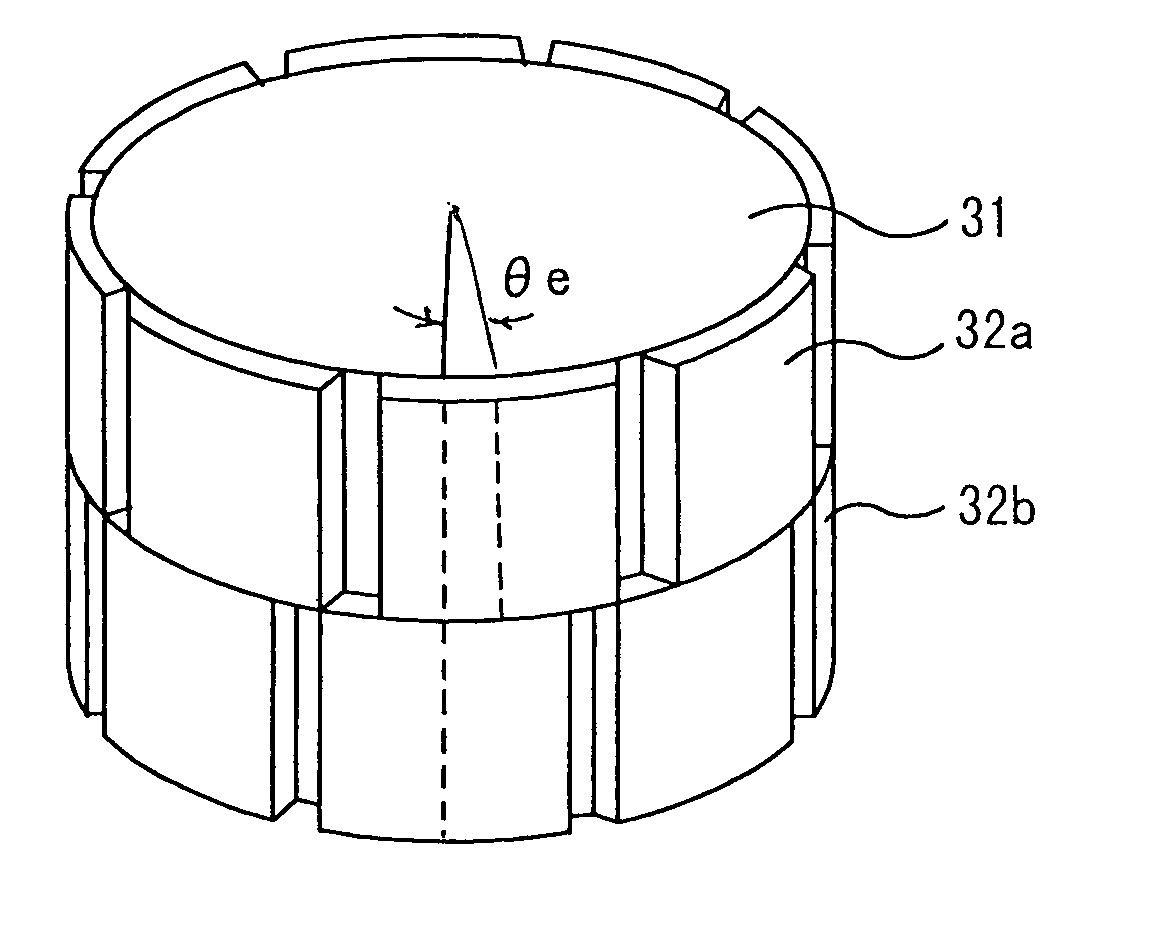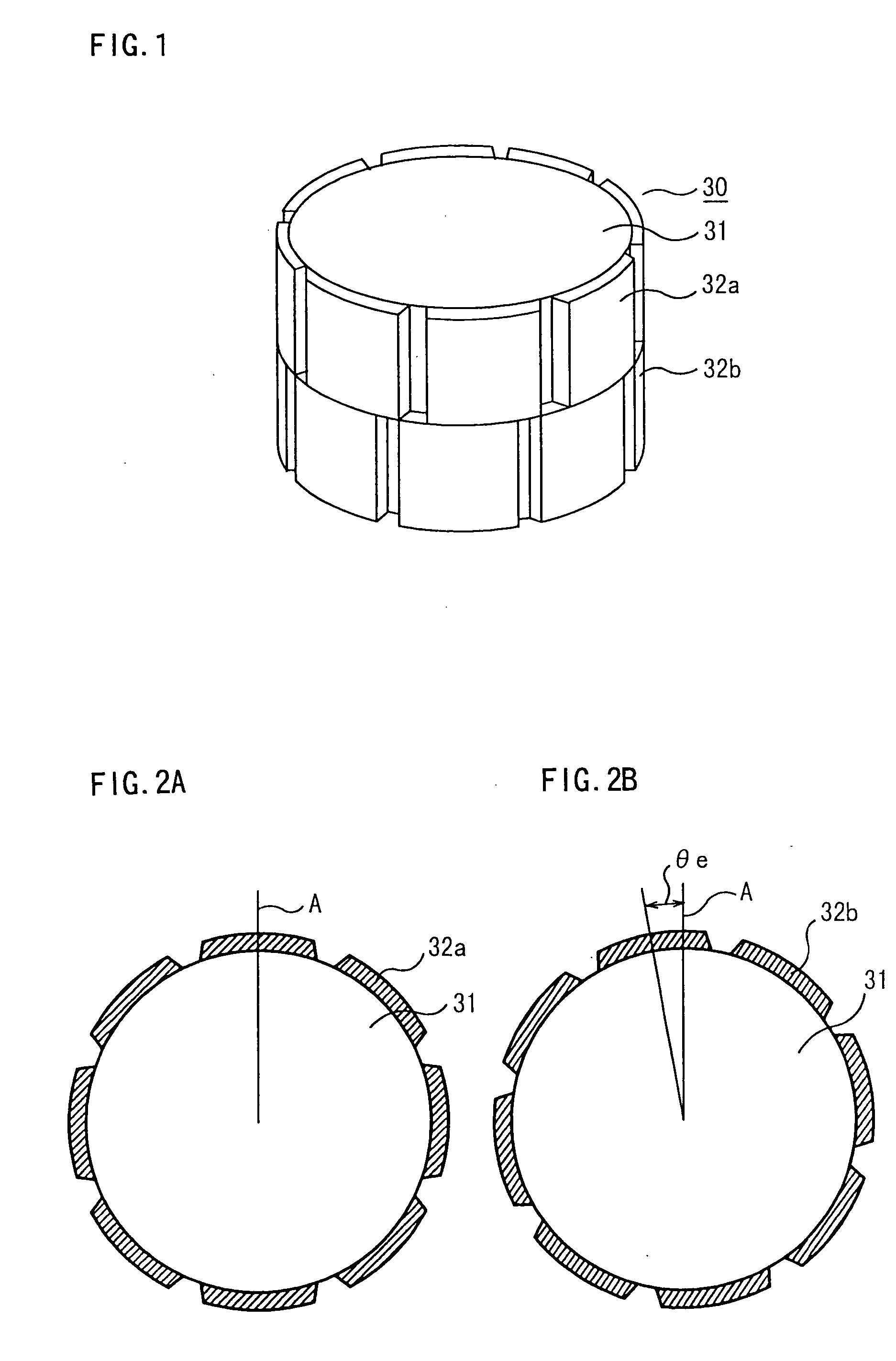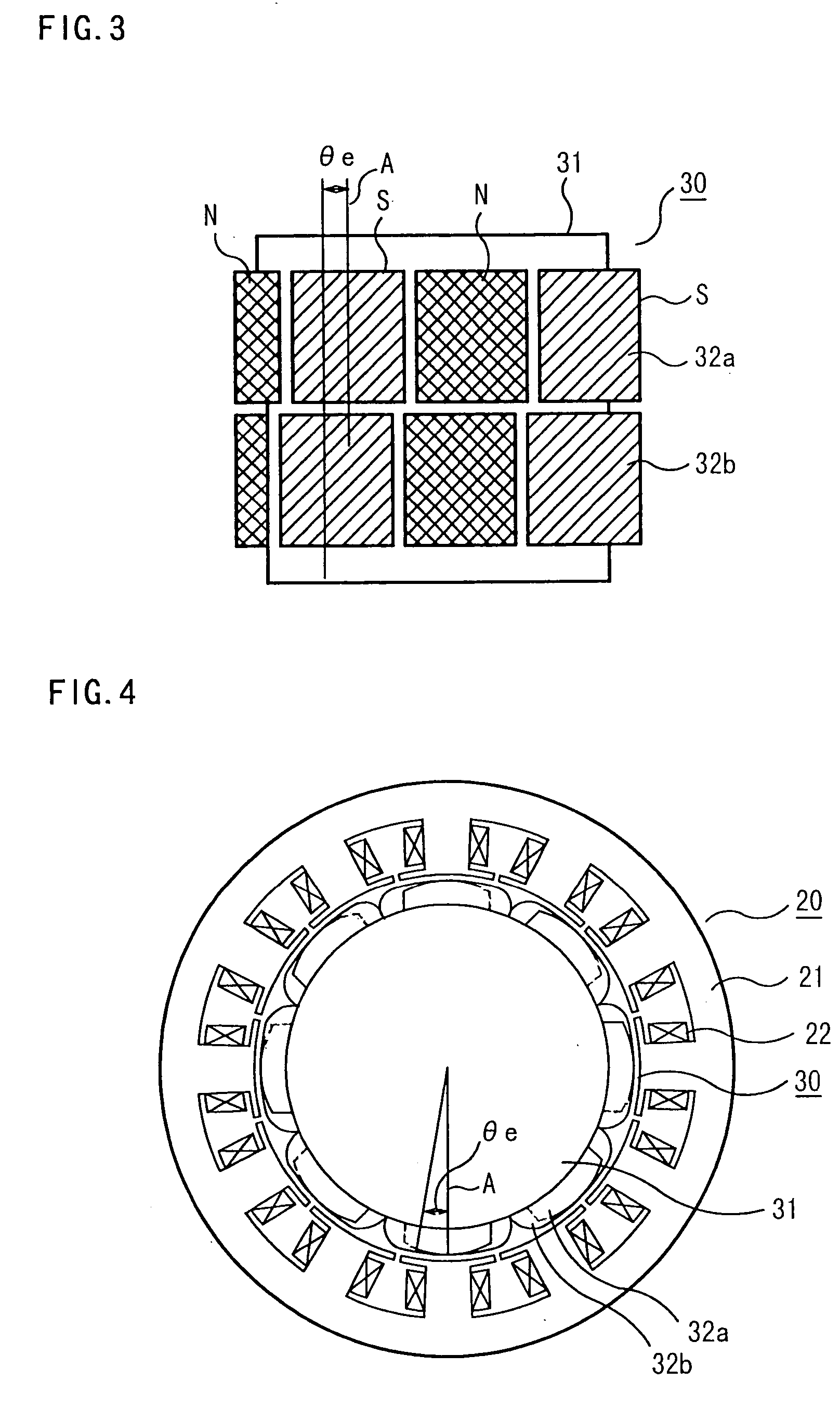Permanent-magnet rotating machine
- Summary
- Abstract
- Description
- Claims
- Application Information
AI Technical Summary
Benefits of technology
Problems solved by technology
Method used
Image
Examples
first embodiment
[0037] FIGS. 1, 2A, 2B, 3 and 4 are diagrams showing the construction of a permanent-magnet rotating machine according to a first embodiment of the invention, in which FIGS. 1, 2A, 2B and 3 particularly show the arrangement of permanent magnets 32a, 32b on a rotor 30.
[0038] Referring to FIGS. 1, 2A, 2B and 3, the rotor 30 includes a rotor core 31 and the aforementioned permanent magnets 32a, 32b attached to a curved outer surface of the rotor core 31. The permanent magnets 32a and the permanent magnets 32b are disposed in an upper row and a lower row, respectively, in such a manner that N and S poles are alternately arranged in each row along the circumference of the rotor core 31. The permanent magnets 32a in the upper row and the permanent magnets 32b in the lower row are offset, or skewed, in the circumferential direction of the rotor core 31 by a row-to-row skew angle (electrical angle) .theta.e. As can be seen from the Figures, the number of magnetic poles of the rotor 30 is 8 ...
second embodiment
[0054] FIG. 10 is a perspective view of a rotor core 31 of a permanent-magnet rotating machine according to a second embodiment of the invention, and FIG. 11 is a sectional view of the rotor core 31 of FIG. 10 as viewed along its axial direction, in which elements identical or similar to those shown in FIGS. 1 through 4 are designated by the same reference numerals.
[0055] As shown in FIG. 10, permanent magnets 32a and permanent magnets 32b are arranged in upper and lower rows, respectively, with a row-to-row skew angle .theta.e in the same fashion as so far discussed with reference to the first embodiment.
[0056] The permanent magnets 32a, 32b in the upper and lower rows are attached to the rotor core 31 in such a manner that their N and S poles are skewed as shown in FIG. 11. Specifically, the permanent magnets 32a, 32b are arranged such that the electrical angle between the N and S poles of successive pole pairs in each row is made alternately smaller and larger than normal by as m...
third embodiment
[0059] FIG. 12 is a fragmentary perspective view of a stator according to a third embodiment of the invention, FIG. 13 is a fragmentary perspective view showing a multi-block structure of the stator of the third embodiment, and FIG. 14 is a fragmentary sectional plan view of each block of the stator of the third embodiment.
[0060] This embodiment employs the same structure as the first embodiment in that a lower limit of the row-to-row skew angle .theta.e is set at a value larger than the theoretical angle .theta.s and an upper limit of the row-to-row skew angle .theta.e is set at a value equal to or smaller than a maximum value of the row-to-row skew angle .theta.e at which the cogging torque ratio does not exceed the cogging torque ratio at the theoretical angle .theta.s determined based on the relationship between the cogging torque ratio and the row-to-row skew angle .theta.e and the magnetic property (B-H curves) of the stator core 21.
[0061] The structure of the third embodiment...
PUM
 Login to View More
Login to View More Abstract
Description
Claims
Application Information
 Login to View More
Login to View More - R&D
- Intellectual Property
- Life Sciences
- Materials
- Tech Scout
- Unparalleled Data Quality
- Higher Quality Content
- 60% Fewer Hallucinations
Browse by: Latest US Patents, China's latest patents, Technical Efficacy Thesaurus, Application Domain, Technology Topic, Popular Technical Reports.
© 2025 PatSnap. All rights reserved.Legal|Privacy policy|Modern Slavery Act Transparency Statement|Sitemap|About US| Contact US: help@patsnap.com



